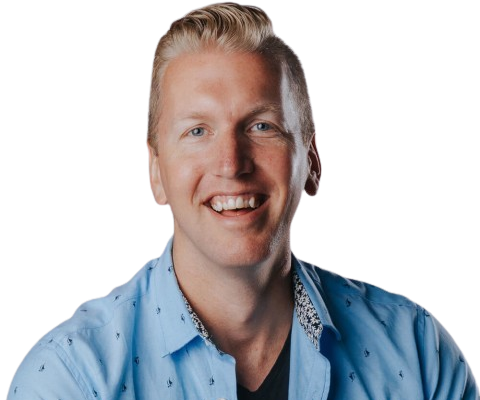The Madrid Protocol and International Trademarking - Updated for 2019
How It Works
According to the World Intellectual Property Organization, the Madrid Union covers 121 countries representing more than 80% of world trade.
Upon filing your international trademark application, each of the designated countries will independently review your application.
For example, you apply for your international trademark by selecting China, Brazil, Russia, South Korea, and Australia. Each of these countries will then examine your trademark application.
Suppose there are previous trademark applications to register similar marks in Russia and South Korea. They will reject your application. But your application in China, Brazil, and Australia may go through.
Still, there is only one application to file. You don't need trademarking firms in each country to file or translate your trademark application. Since English is not the official language of every nation, filing a direct application means that you must respond in that language.
For instance, if you file a direct application in Vietnam, you must respond in Vietnamese and likely need an agent. But with a Madrid Application, the application can be in English, French, or Spanish, and you can check Vietnam for your trademark registration.
Then, you can respond in English to any inquiries from Vietnam, or any other country, regarding your International Application.
Fees
Every country has a fee structure for trademarks. With an International Trademark Application under the Madrid Protocol, paying these official fees is much easier since you pay through one avenue rather than wiring funds worldwide.
Trademark registration fees vary and are specific to each country.
You will find many calculators available that can give you particular costs, but here, we will provide you with a brief overview of how these fees work.
First, there is a basic fee for the application of either Fr.653 or 9 Swiss francs depending on whether the mark is color or black-and-white. A supplementary payment of 100 Swiss francs is due for each class of goods and services beyond the first three.
There is a complementary fee of 100 Swiss francs or another specific amount specific to each country. But typically, most countries will request more than 100 Swiss francs.
What might these fees look like on an international application?
Let's look at an International Application In four classes based on a basic application filed in the US. Suppose we designate the following ten countries: Australia, Canada, China, European Union, India, Israel, Mexico, Philippines, Russia, and South Korea.
Your fees will be as follows:
Australia: Fr.263 for the first class
Fr.789 for the additional three classes
Canada: Fr.251
Fr.228
China: Fr.249
Fr.375
EU: Fr.897
Fr.55 for the second classification
Fr.328 for the additional two classes
(The EU is a Madrid Union member, and you may treat all EU member countries as one).
India Fr.148
Fr.444
Israel: Fr.435
Fr.981
Mexico: Fr.167
Fr.501
Philippines: Fr.116
Fr.348
S. Korea: Fr.265
Fr.765
Grand Total Fr.8448
If for a single class: Fr.3534
For two classes: Fr.5066
What about Non-Madrid Union Countries?
You cannot file an international application if you have a business in a nonparticipating country. You must file direct applications in each country you wish to register.
Also, your International Trademark Application does not apply in these countries. You will need to file a direct trademark application in any country not participating in the Madrid Union.
For your convenience, at the bottom of this post is a list of the 75 nonparticipating countries as of August 24, 2019.
It Depends
International Trademark applications and registrations are dependent on the home application or registration.
When the home application is amended, denied, withdrawn, or canceled during the five years following its registration date, the associated international application receives the same treatment. In other words, if the home application fails, the international registration will also cancel.
However, after being in effect for five years, it becomes independent of the basic registration. Any possible limitation, abandonment, or cancellation of the primary application no longer affects the international registration.
Should You Retain an Agent?
Each trademark office independently examines every application. Seeking assistance from a local agent to address objections with that particular trademarks office is prudent and often necessary, especially when directly filing.
About Filing
First, we don't recommend using the Madrid Union method if you want to file in five or fewer countries. The risk does not justify any possible savings. But, when filing in more than five countries, it begins to make sense.
A comprehensive trademark search is crucial for every application and more so for an International Trademark Application.
Brand owners sometimes wait until after the opposition period to file for their international trademark.
The problem here is that the opposition period lasts beyond the six-month grace period forcing you to make direct applications in each country which is more complicated and time-consuming.
We don't recommend filing your basic application in the European Union since third parties can raise opposition and call for cancellation based on prior rights. And remember that the list of goods and services in the international application may not exceed those in the basic application or registration.
Summary
The Madrid Protocol and Madrid Agreement allow entrepreneurs and companies to file an International Trademark Application to streamline trademarking by centralizing the process.
You must have a viable business in a member country and file for that trademark before applying the Madrid methods. Do a thorough trademark search and evaluate your strategy to determine if an International Trademark Application is best for your situation.
Typically, you should look at more than five countries you want to register with. Sometimes, you may prefer to take the national or regional route to expand your trademark protection in other countries.
Whatever you decide to do with your trademark, you can control your costs and take a lot of work and worry off your to-do list by taking advantage of Trademark Factory®'s unique, all-inclusive, 100% cash-back guarantee of trademark registration success.
Let our team of skilled professional trademark attorneys and specialized staff do all the work. We will take care of all correspondence and guide your application through the bureaucracy to its ultimate approval while keeping you informed.
Contact us today to build your international brand.
Here are the 75 countries not participating in the Madrid Union as of August 21st, 2019:
Andorra, Angola, Argentina, Bahamas, Bangladesh, Barbados, Belize, Bolivia, Burundi, Cabo Verde, Chile, Costa Rica, the Democratic Republic of the Congo, Djibouti, Dominica, Dominican Republic, Ecuador, El Salvador, Eritrea, Ethiopia, Fiji, Grenada, Guatemala, Guyana, Haiti, Holy See, Honduras, Iraq, Jamaica, Jordan, Kiribati, Kuwait, Lebanon, Libya, Malaysia, Maldives, Malta, Marshall Islands, Mauritius, Micronesia, Myanmar which is formerly Burma, Nauru, Nepal, Nicaragua, Nigeria, Pakistan, Palau, Panama, Papua New Guinea, Paraguay, Peru, Qatar, Saint Kitts and Nevis, Saint Lucia, Saint Vincent and the Grenadines, Saudi Arabia, Seychelles, Solomon Islands, Somalia, South Africa, South Sudan, Sri Lanka, Suriname, Swaziland, Tanzania, Timor-Leste, Tonga, Trinidad and Tobago, Tuvalu, Uganda, United Arab Emirates, Uruguay, Vanuatu, Venezuela, and Yemen.












